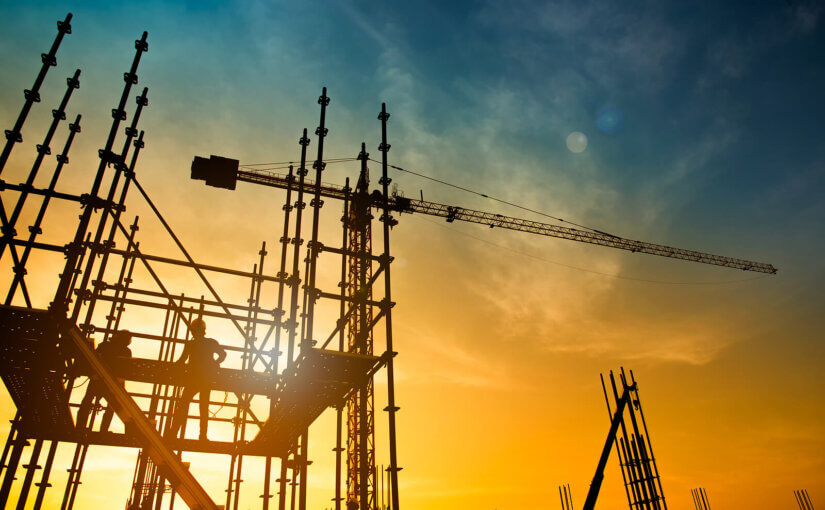Scaffolding is crucial in elevating the efficiency and safety of construction work. From home roofing and structural repairs to building a ten-story boutique hotel, using the right scaffolding system will provide the platform you need to complete the job.
What is scaffolding?
Commonly used by construction workers to gain access to structures at heights without needing to be lifted by cranes or forklifts, scaffolding refers to a temporary raised framework or structure — it can be made from aluminium, steel, timber, and even fibreglass.
Scaffolding needs to be robust and sturdy enough to support the weight of the workers and their tools. At other times, it might be required to hold heavy building materials like bricks, concrete, and stucco.
Scaffolding is essential for many construction projects, although it is also used for window cleaning jobs and painting building exteriors.
Types of scaffolding systems
A construction project’s needs will determine the types of scaffolding you choose, specifically the overall structure and kind of work to be done.
Each has unique benefits and qualities, with some structural services sometimes requiring a specialised scaffolding system.
Let’s look at six of the most common types of scaffolding systems used in construction.
Single scaffolding
Single scaffolding is generally used in brick masonry works. It uses the structure being built as support and consists of ledgers (horizontal supports) and standards (vertical supports) placed parallel to the wall at a distance of about 1.2m.
Putlogs then connect the scaffolding to the wall through holes made in the wall at an interval of 1.2 to 1.5m.
Also called “putlog scaffolding” or “brick layer’s scaffolding”, this type of scaffolding is effective for simple brick buildings but not complex structures.
Double scaffolding
Primarily used for stone masonry, double scaffolding is generally more substantial and provides better support for construction workers than single scaffolding.
As it’s far more challenging to create holes in stone walls to support putlogs, two rows of scaffolding are constructed to strengthen the support structure.
The first row sits parallel to the wall (20-30cm away), while the second row lies 1 to 1.5m away from the first row.
Putlogs are then positioned and supported by both frames. Cross braces and rakers are added to make the scaffolding stronger and more durable.
Other names for this type of scaffolding are “independent scaffolding” and “mason’s scaffolding”.
Modular scaffolding
Using pre-fabricated verticals and horizontals that connect systematically, modular scaffolding (also known as system scaffolding) is widely used for construction activities.
Despite their lack of flexibility, they are popular because the location of the connectors is fixed, making them easy to erect.
There are many different kinds of modular scaffolding. Each has specific efficiencies, with some excelling in highly loaded conditions and others better matched to smaller repeated scaffold structures.
Tube and clamp scaffolding
Tube and clamp scaffolding is one of the oldest types of steel scaffolding. Easy to assemble and dismantle, it uses steel tubes connected by clamps.
While this type of scaffolding can be labour and time-intensive, its flexibility and superb load-bearing properties make it a popular choice in irregular buildings, power plants, and refineries.
The tubes can be connected at any angle and interval if the scaffolding follows safety rules and regulations.
Right-angle or swivel clamps and couplers connect the horizontal or diagonal tubes to the scaffold. This helps increase the structure’s overall stability.
Suspended scaffolding
Suspending the working platform from above the ground is sometimes a more economical and practical option when working at high levels.
This is known as suspended scaffolding, where the working platform is suspended from a structure’s roof with the help of chains or wire ropes. It can be raised and lowered to the required level as needed.
Suspended scaffolding is the go-to for repair works, pointing, and painting tall buildings, among others.
Wooden and bamboo scaffolding
Wooden and bamboo scaffolding is especially prominent in Hong Kong and Asia, where it is grown locally and cheaply.
It’s renowned for its flexibility and strength and being more eco-friendly than steel, helping avoid unnecessary landfills.
Bamboo has a tensile strength of 28,000 per square inch and has been used to construct modern structures worldwide.
This resilience has made this scaffolding type successful in the construction industry, with proficient designers and technicians fabricating and navigating storeys of bamboo scaffolding while working on structures.
Final thoughts
Some construction projects require a simple DIY scaffold, while others require a more elaborate temporary working platform at height.
Whether you’re building a new housing estate, a manufacturing plant, or something infrastructural like a bridge or tunnel, your construction project will inevitably produce waste (and lots of it).
Contact Forge Skip Hire to discuss your skip hire requirements so your waste is disposed of responsibly and the construction site is kept clean, organised, and safe for workers.
